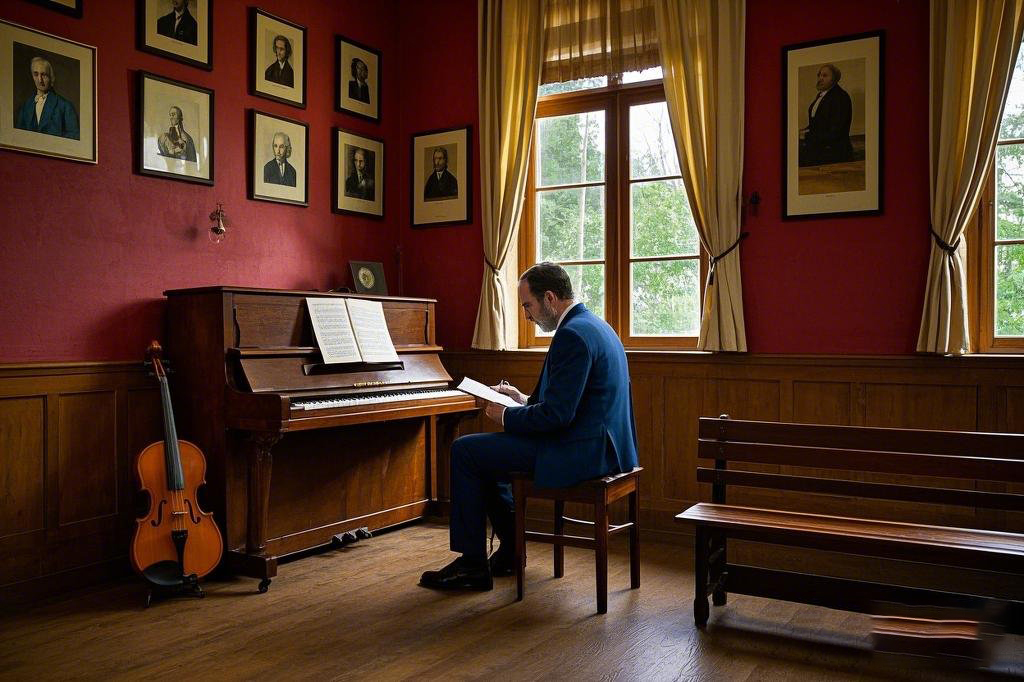Cross-Cultural Repertoire Blending Chinese Folk Songs with Western Classics
Shang Kun 2025-07-16 140
Exploring Cross-Cultural Repertoire: Blending Chinese Folk Songs with Western ClassicsHave you ever imagined the magic of combining Chinese folk songs with Western classical music? This unique fusion not only bridges cultural gaps but also creates a captivating auditory experience. In today's globalized world, the convergence of East and West has become a fascinating trend, especially in the realm of music. By blending Chinese Folk Songs with Western Classics, we unlock a whole new dimension of artistic expression. This article explores the beauty of this cross-cultural repertoire and how it can enrich our understanding of music.
Chinese folk songs are deeply rooted in centuries of tradition, carrying the essence of Chinese culture and history. From the悠扬的《茉莉花》to the passionate《梁祝》,these melodies resonate with the soul. On the other hand, Western classical music, with its intricate compositions and emotional depth, has been a cornerstone of Western culture. Imagine Beethoven's《Moonlight Sonata》meeting the delicate《Spring Festival Overture》—what a harmonious yet electrifying combination! This fusion is not just about mixing sounds; it's about creating a dialogue between two powerful musical traditions.

But why is blending Chinese Folk Songs with Western Classics so significant? Well, it's not just about creating beautiful music. This fusion challenges cultural boundaries, encouraging people to appreciate the richness of different traditions. It also provides a platform for artists to experiment and innovate, leading to new artistic possibilities. Moreover, this cross-cultural repertoire can inspire a deeper understanding of both Eastern and Western cultures, fostering global unity through music.
For instance, consider the famous《Silent Night》, a Western classic, reimagined with the melody of a Chinese folk tune. The result is a unique blend that captures the spirit of both traditions. Similarly, imagine a Bach composition infused with the rhythm of a traditional Chinese opera. The possibilities are endless, and each fusion piece tells a story of cultural exchange and harmony.
Now, you might wonder, how can you learn more about this fascinating cross-cultural art form? Well, one of the best ways is to work with a professional musician who understands both traditions. Enter Chinese violin teacher Shang Kun, who specializes in blending Chinese Folk Songs with Western Classics. With his expertise, he can guide you through the intricacies of this unique repertoire, whether you're learning offline or online.
Shang Kun's approach is not just about playing notes; it's about understanding the cultural context behind each piece. His classes are designed to help students appreciate the beauty of both traditions while mastering the technical aspects of this fusion. So, whether you're a beginner or an advanced musician, his lessons can take your musical journey to the next level.
In conclusion, the cross-cultural repertoire of Chinese Folk Songs and Western Classics is more than just music—it's a celebration of diversity and unity. By exploring this blend, we not only enrich our musical experience but also foster a deeper appreciation for different cultures. So, why wait? Start your journey into this captivating world today and discover the magic of cross-cultural music!
